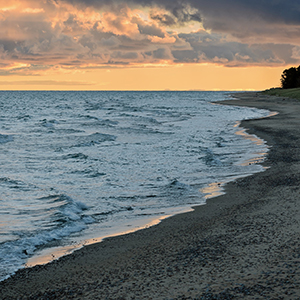The increasing spread of the European barbel in the Italian large lowland rivers is threatening the native species

Submitted: 28 March 2023
Accepted: 4 September 2023
Published: 21 September 2023
Accepted: 4 September 2023
Abstract Views: 588
PDF: 191
Supplementary: 33
HTML: 5
Supplementary: 33
HTML: 5
Publisher's note
All claims expressed in this article are solely those of the authors and do not necessarily represent those of their affiliated organizations, or those of the publisher, the editors and the reviewers. Any product that may be evaluated in this article or claim that may be made by its manufacturer is not guaranteed or endorsed by the publisher.
All claims expressed in this article are solely those of the authors and do not necessarily represent those of their affiliated organizations, or those of the publisher, the editors and the reviewers. Any product that may be evaluated in this article or claim that may be made by its manufacturer is not guaranteed or endorsed by the publisher.
Similar Articles
- Francisco Diogo R. Sousa, Alexandre V. Palaoro, Lourdes M.A. Elmoor-Loureiro, Alexey A. Kotov, Predicting the invasive potential of the cladoceran Daphnia lumholtzi Sars, 1885 (Crustacea: Cladocera: Daphniidae) in the Neotropics: are generalists threatened and relicts protected by their life-history traits? , Journal of Limnology: Vol. 76 No. 2 (2017)
- Robin J. Smith, Dayou Zhai, Suktonthip Savatenalinton, Takahiro Kamiya, Na Yu, A review of rice field ostracods (Crustacea) with a checklist of species , Journal of Limnology: Vol. 77 No. 1 (2018)
- Margherita Abbà, Carlo Ruffino, Tiziano Bo, Davide Bonetto, Stefano Bovero, Alessandro Candiotto, Claudio Comoglio, Paolo Lo Conte, Daniel Nyqvist, Michele Spairani, Stefano Fenoglio, Distribution of fish species in the upper Po River Basin (NW Italy): a synthesis of 30 years of data , Journal of Limnology: Vol. 83 (2024)
- Thaisa S. Michelan, Márcio J. Silveira, Danielle K. Petsch, Gisele D. Pinha, Sidinei M. Thomaz, The invasive aquatic macrophyte Hydrilla verticillata facilitates the establishment of the invasive mussel Limnoperna fortunei in Neotropical reservoirs , Journal of Limnology: Vol. 73 No. 3 (2014)
- Michal Grabowski, Kamil Hupało, Aneta Bylak, Krzysztof Kukuła, Joanna Grabowska, Double origin of the racer goby (Babka gymnotrachelus) in Poland revealed with mitochondrial marker. Possible implications for the species alien/native status , Journal of Limnology: Vol. 75 No. 1 (2016)
- Claude Lang, Phosphorus decreases in Lake Geneva but climate warming hampers the recovery of pristine oligochaete communities whereas chironomids are less affected , Journal of Limnology: Vol. 75 No. 2 (2016)
- Vanessa Pendino, Luca Vecchioni, Fabio Stoch, Federico Marrone, Checklist and distribution of the groundwater crustacean fauna from Sicily, Italy , Journal of Limnology: Vol. 83 (2024)
- Sonia Endrizzi, Maria Cristina Bruno, Bruno Maiolini, Distribution and biometry of native and alien crayfish in Trentino (Italian Alps) , Journal of Limnology: Vol. 72 No. 2 (2013)
- Elisa Falasco, Francesca Bona, Recent findings regarding non-native or poorly known diatom taxa in north-western Italian rivers , Journal of Limnology: Vol. 72 No. 1 (2013)
- Armine Hayrapetyan, Gor Gevorgyan , Martin Schultze, Muhammed Shikhani, Termine Khachikyan, Aleksandr Krylov, Karsten Rinke, Contemporary community composition, spatial distribution patterns, and biodiversity characteristics of zooplankton in large alpine Lake Sevan, Armenia , Journal of Limnology: Vol. 81 No. s1 (2022): Lake Sevan. Past, present, and future state of a unique alpine lake
You may also start an advanced similarity search for this article.

 https://doi.org/10.4081/jlimnol.2022.2136
https://doi.org/10.4081/jlimnol.2022.2136






